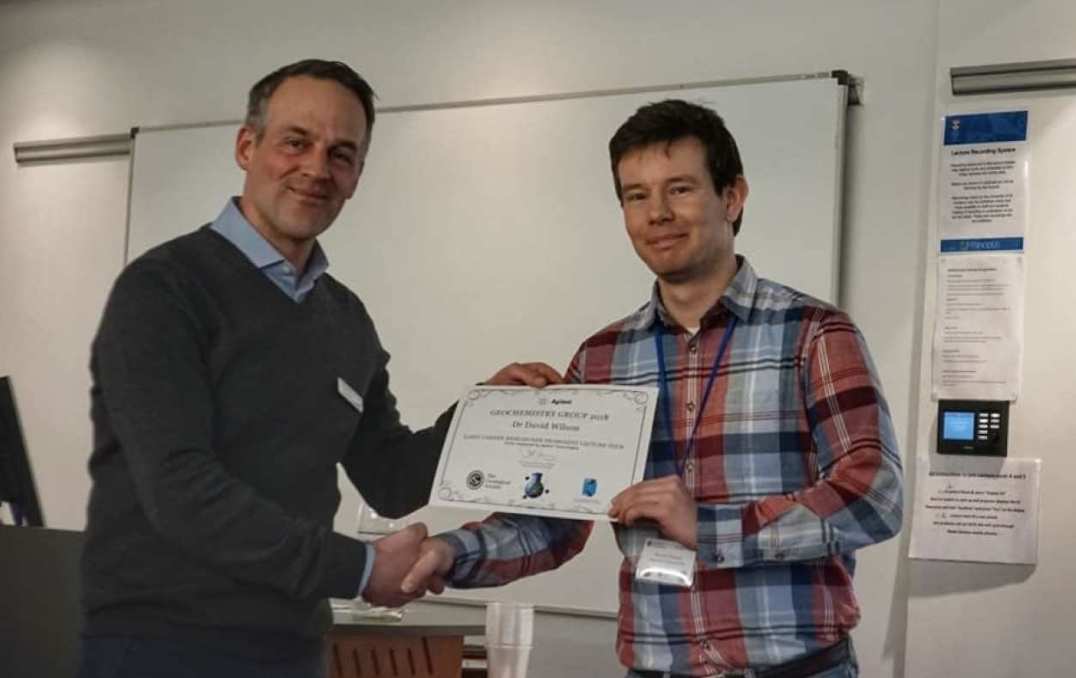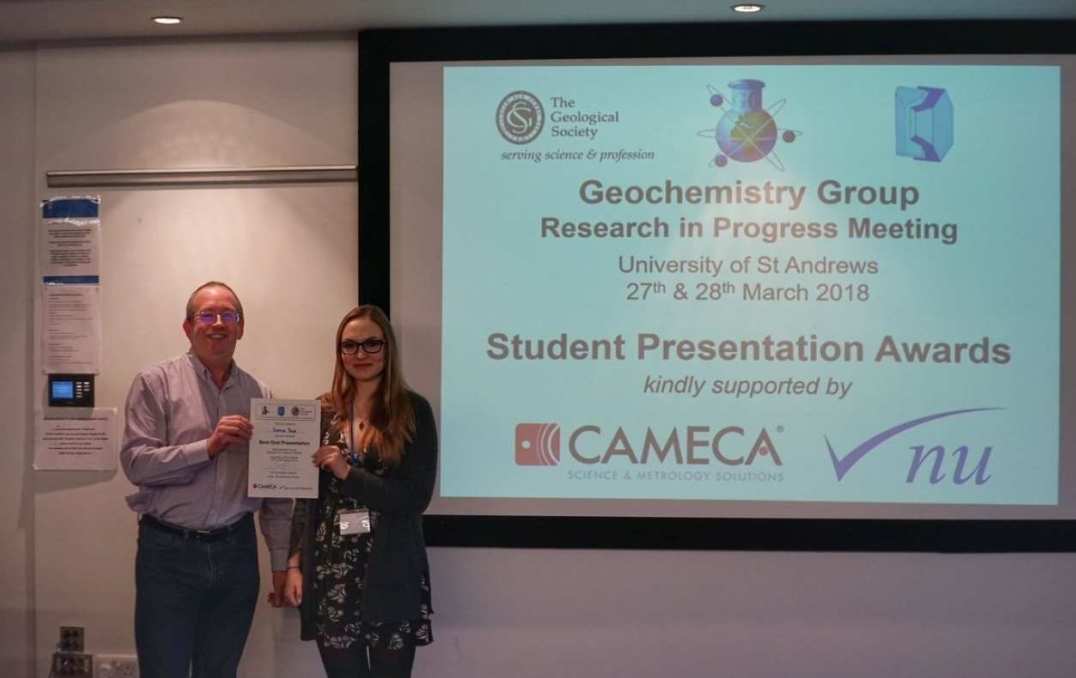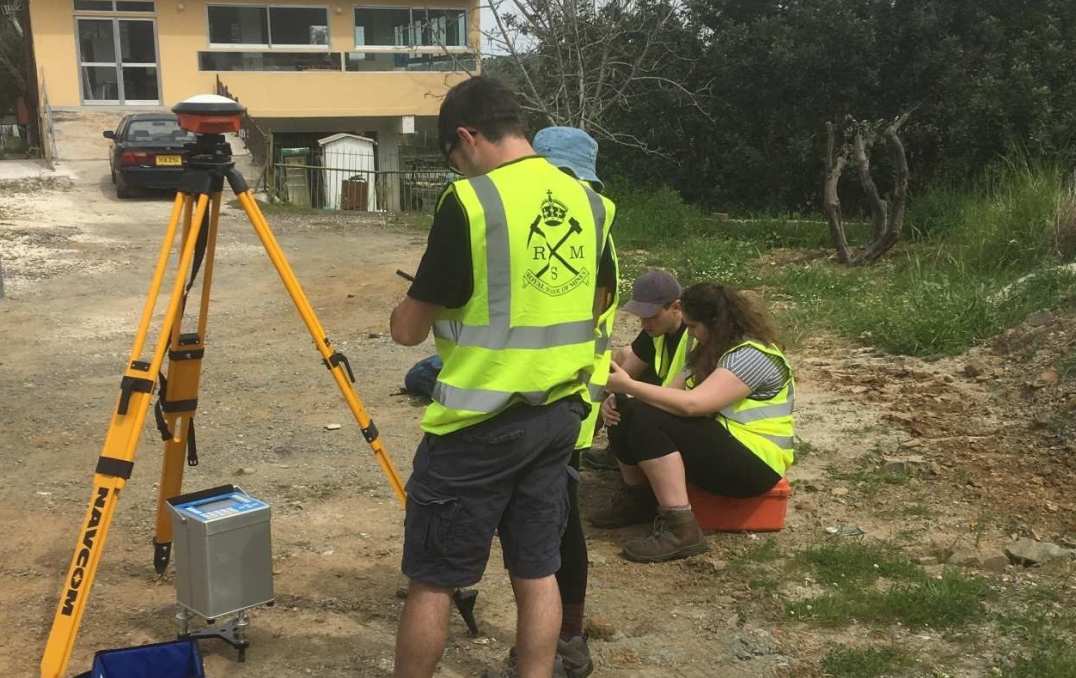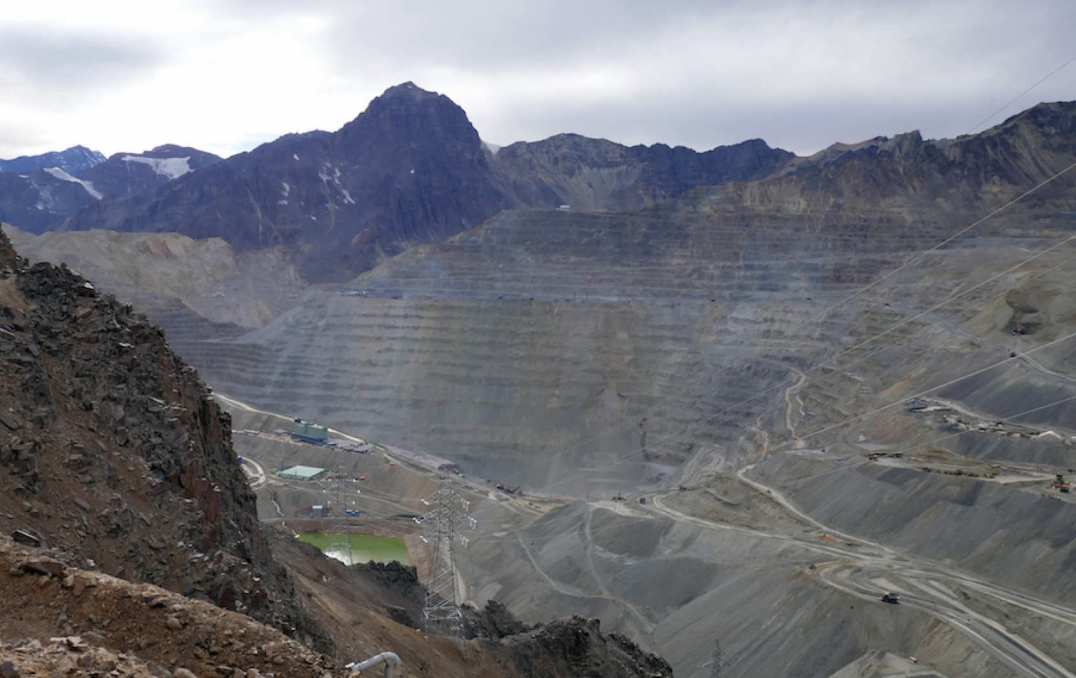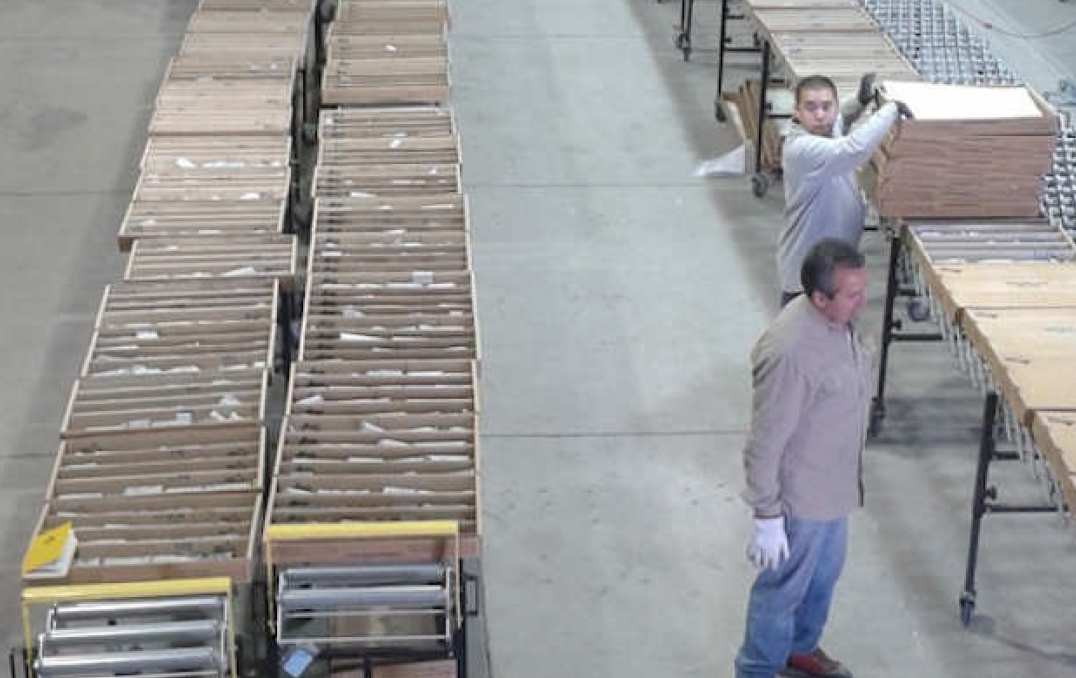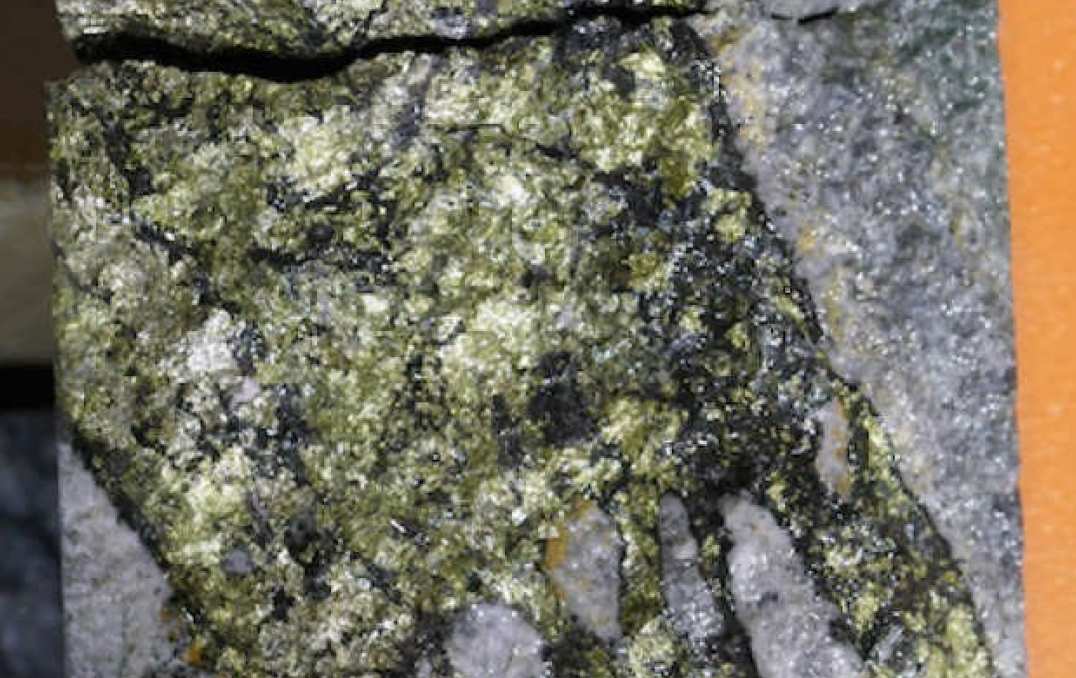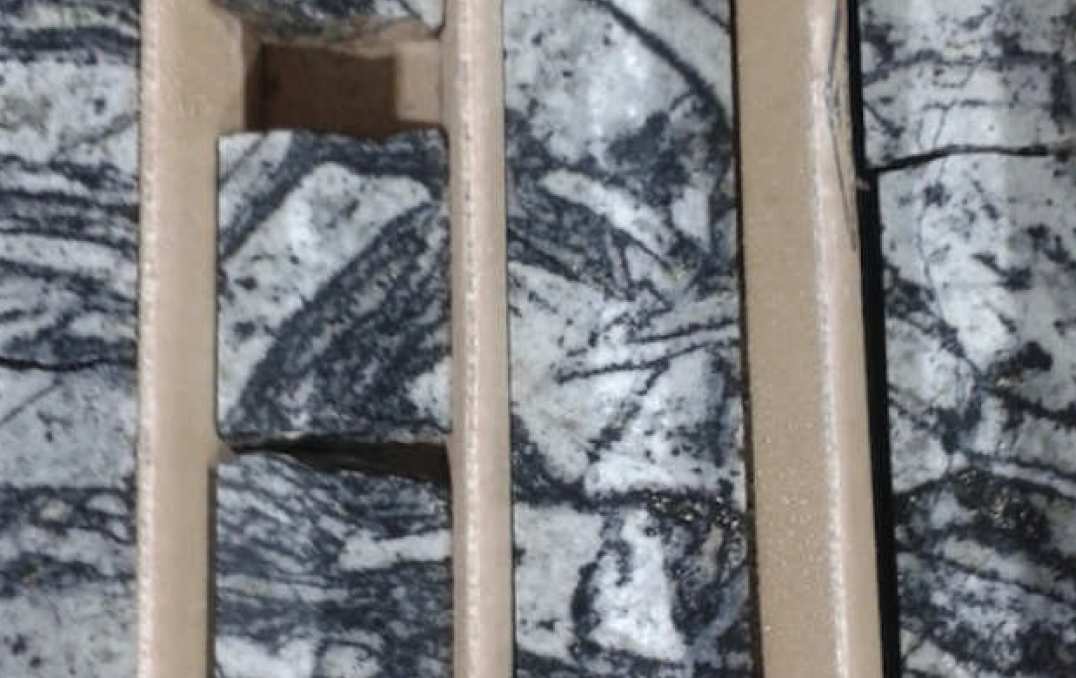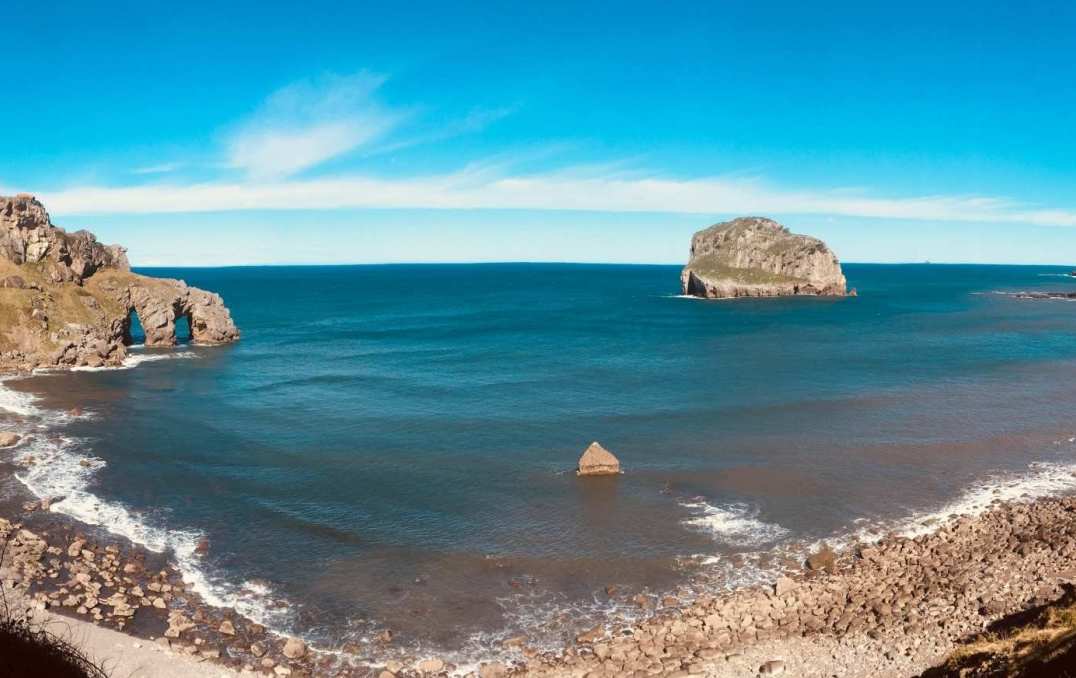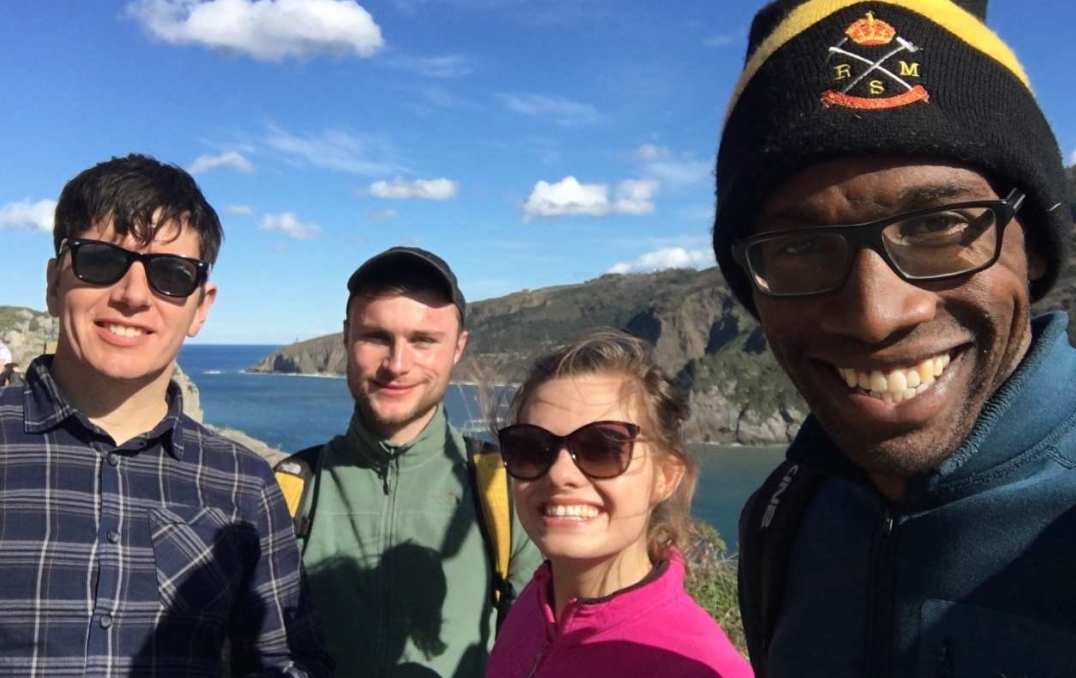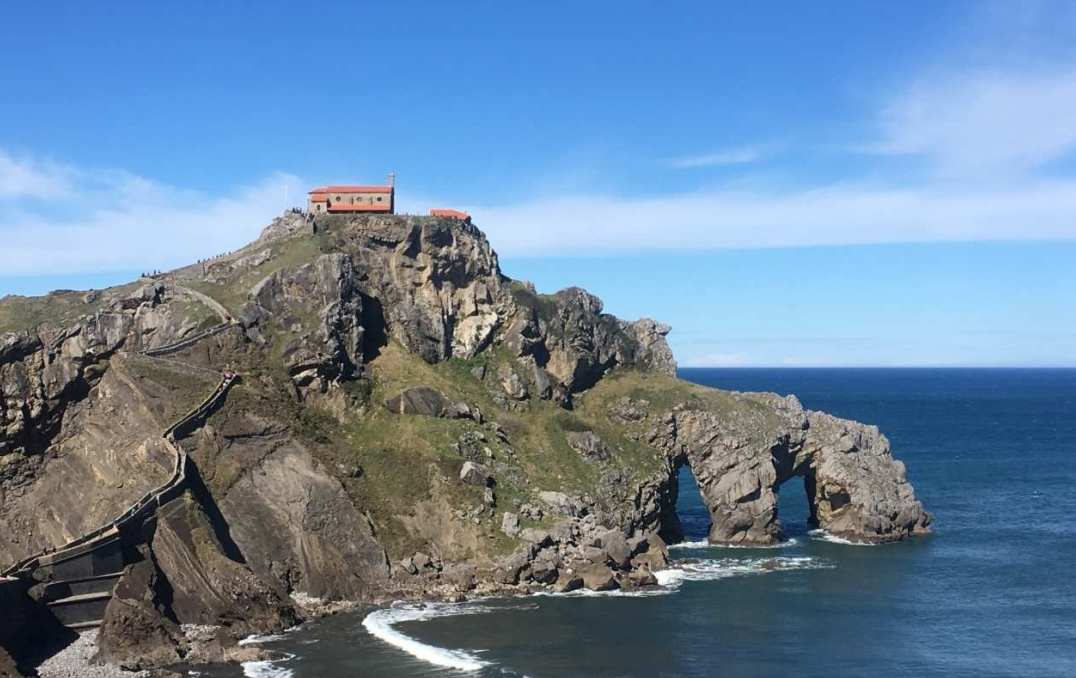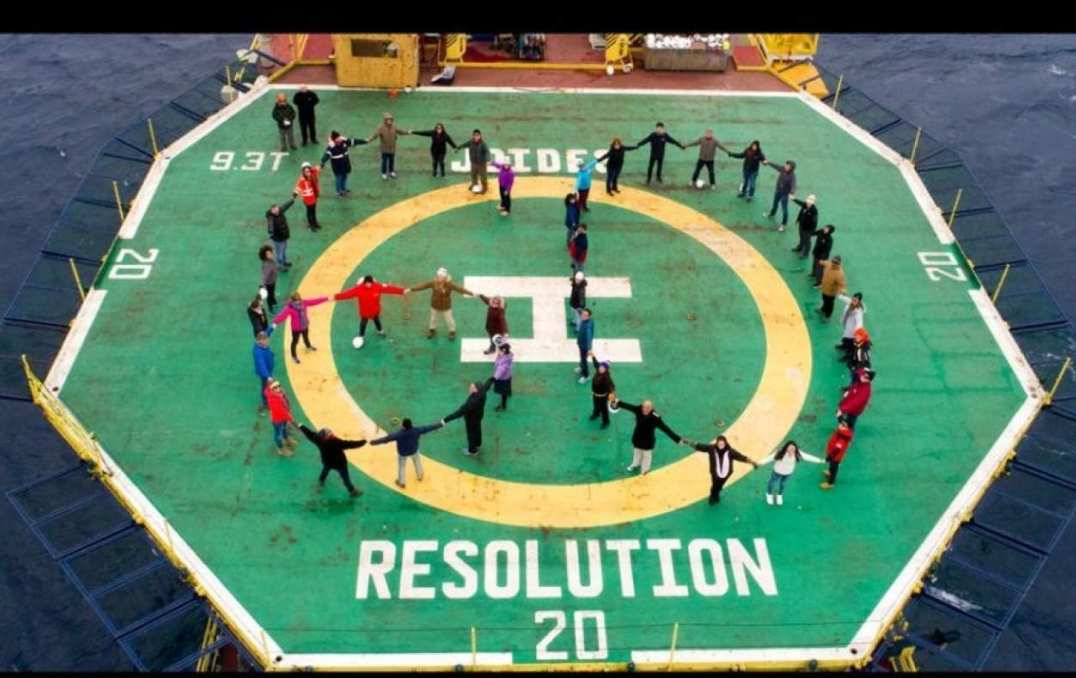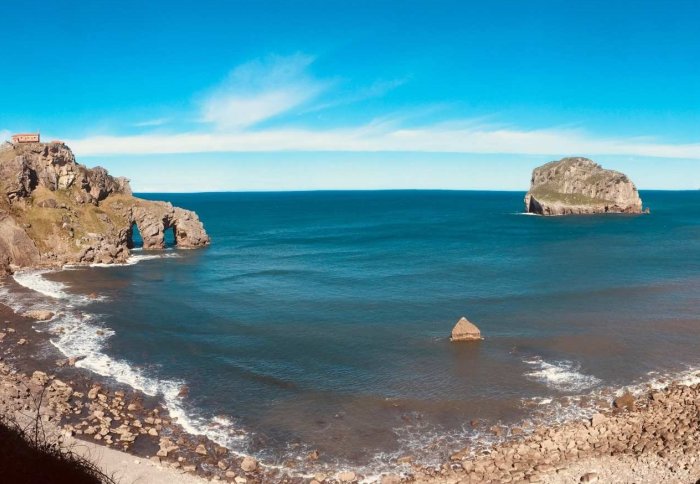

Find out the latest news and updates from around the Department of Earth Science and Engineering.
Contents
Publications
Conferences, Lectures and Seminars
Awards
Research Grants
Outreach
Fieldwork
PhD vivas
Obituary
Publications
Joshi, S.K., Rai, S.P., Sinha, R., Gupta, S., Densmore, A.L., Rawat, Y.S., Shekhar, S., 2018, Tracing groundwater recharge sources in the northwestern Indian alluvial aquifer using water isotopes (δ18O, δ2H and 3H). Journal of Hydrology, v. 559, p. 835-847.
Yu, C., Day, E.A., de Hoop, M.V., Campillo, M., Goes, S., Blythe, R.A., and van der Hilst, R.D. (2018), Compositional heterogeneity near the base of the mantle transition zone beneath Hawaii. Nature Communications, doi:10.1038/s41467-018-03654-6
Rebekah Moore and Mark Rehkamper attended the European Conference in Nanofilms 2018 (21st-22nd March) in Cranfield University. Rebekah gave an invited talk in a special session on cancer detection, entitled "Zinc isotopes as a possible biomarker for breast cancer". This was followed by a panel discussion which focused on interdisciplinary collaboration.
The MIT department generated a press release on this exciting topic.
Reeves, J., Magee, C., Jackson, C. A-L., (2018). Unravelling intrusion-induced forced fold kinematics and ground deformation using 3D seismic reflection data. Volcanica 1, 1-17. DOI: https://doi.org/10.30909/vol.01.01.0117
Coxall, H.K., Huck, C., Huber, M., Lear, C.H., Legarda-Lisarri, A., O’Regan, M., Sliwinska, K.K., van de Flierdt, T., de Boer, A.M., Zachos, J.C., Backman, J. (2018). Export of nutrient rich Northern Component Water preceded early Oligocene Antarctic glaciation. Nature Geoscience 11, 190-196. https://doi.org/10.1038/s41561-018-0069-9.
Bridgestock, L., Rehkämper, M., van de Flierdt, T.,Paul, M., Milne, A., Lohan, M., Achterberg, E.P. (2018). The distribution of lead concentrations and isotope compositions in the eastern Tropical Atlantic Ocean. Geochimimica et Cosmochimica Acta 225, 36-51. https://doi.org/10.1016/j.gca.2018.01.018.
Sangiorgi, F., Bijl, P.K., Passchier, S., Salzmann, U., Schouten, S., McKay, R., Codie, R., Pross, J., van de Flierdt, T., Bohaty, S.M., Levy, R., Williams, T., Escutia, C., Brinkhuis, H. (2018). Southern Ocean warming and Wilkes Land ice sheet retreat during the mid-Miocene. Nature Communications 9, 317. doi:10.1038/s41467-017-02609-7.
Conferences, Lectures and Seminars
Chris Jackson gave two talks in the Department of Earth Sciences at the University of Oxford (9th March). His first talk (catchily titled, ‘The internal structure and composition of salt diapirs: What do we know, what might we want to know, and why might it be important?’) was to members of the Shell Geoscience Laboratory, whereas his second talk, the weekly department seminar, was entitled ‘Jungle Volcano: The Descent into Nyiragongo’. For anyone wanting to watch BBC2’s ‘Expedition Volcano’, please get in touch with Chris, who has managed to ‘borrow’ digital copies of the series…
David Wilson gave a departmental seminar at University College London on 2nd March entitled “Radiogenic isotopes tracing Quaternary climate processes: from continental weathering to ice sheet retreat.
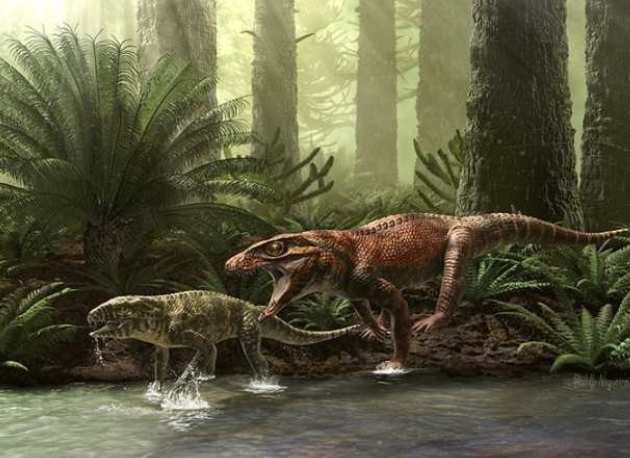 Phil Mannion and PhD students Ale Chiarenza and Lewis Jones, from the Palaeobiology Research Group, attended the annual Lyell Meeting at the Geological Society on 7 March, with this year’s theme on Mass Extinctions.
Phil Mannion and PhD students Ale Chiarenza and Lewis Jones, from the Palaeobiology Research Group, attended the annual Lyell Meeting at the Geological Society on 7 March, with this year’s theme on Mass Extinctions.
Phil and Ale presented on the diversity of dinosaurs and cold-blooded reptiles (lizards, snakes, crocodiles, turtles) in the lead-up to and aftermath of the Cretaceous/Paleogene (K/Pg) mass extinction, 66 million years ago.
10 members of the MAGIC group attended the annual Research in Progress meeting of the Geochemistry Group (GGRiP) of the Mineralogical Society and the Geological Society in St Andrews, Scotland. Susan Little (NERC fellow) co-organised the meeting as co-opted committee member and got promoted to full committee member. Julie Prytulak (now Durham) gave a keynote talk, and David Wilson (Senior Teaching Fellow) delivered one of the lectures he toured the country with for his Early Career Lecture Award (see photo).
The highlight however was the many wonderful student presentations, which is what the meeting is all about. Half of the student presentation prizes awarded went to MAGIC PhD students. Congratulations to Sophie Page (see photo, 1st year Phd), Hollie Packman (1st year PhD), and Rachel Bertram (final year PhD).
Awards
Dr. Steven Banham has been awarded a 3 year Aurora Fellowship by the UK Space Agency to continue his work on reconstructing ancient habitable environments on Mars with the Mars Science Laboratory Curiosity rover.
Research Grants
Phil Mannion has received a Royal Society Research Grant (£129,000) to work on the evolutionary history of an extinct group of crocodile relatives, known as notosuchians. Unusually, this group included herbivorous species, as well as animals with limbs adapted to running. Many of these animals also lived in arid environments, and this project will attempt to determine how environmental factors constrained the group’s distribution and evolutionary history, before their extinction .10 million years ago. The grant will fully fund a PhD student for four years, as well as support new palaeontological fieldwork in the Paleogene of Portugal.
PhD student Jonathan Rio was awarded a grant of £700 from the International Union for Conservation of Nature's (IUCN) Crocodile Specialist Group. The grant will part fund fieldwork in southern Anhui Province, China to collect data on the Critically Endangered Chinese alligator, of which less than 130 survive in the wild. Jonathan began fieldwork last year, where he met collaborators at Anhui Normal University, and travelled through the Anhui National Nature Reserve for Chinese Alligators, sighting wild alligators and nests.
Michael Steventon received the Daniel Pidgeon Fund, a £1000 research grant from the Geological Society. This will go towards researching mass-transport complexes as seals looking specifically at the Magnus Field in the Northern North Sea.
Outreach
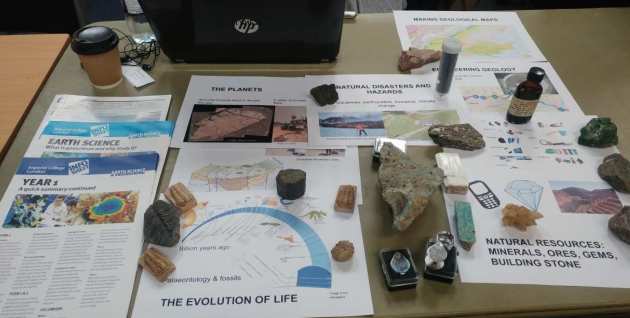 Ruth Davey visited Sacred Heart Girls School in Hammersmith to fly the geological flag, encouraging young girls to consider a career in geosciences. Over 150 pupils attended the event and the feedback received was overwhelimingly positive. Special thanks to Rob Lowther and Lidia Lonergan for providing engaging and interesting samples.
Ruth Davey visited Sacred Heart Girls School in Hammersmith to fly the geological flag, encouraging young girls to consider a career in geosciences. Over 150 pupils attended the event and the feedback received was overwhelimingly positive. Special thanks to Rob Lowther and Lidia Lonergan for providing engaging and interesting samples.
Fieldwork
In March, Adrian Muxworthy, Lizzie Day, and Ian Bastow, took the second year geophysicists to Cyprus for the annual geophysics field trip. In addition to the usual geophysics work, this year’s trip included a 'day of geology' at the Troodos Geopark, kindly supported by Efthimios Tsiolakis from the Geological Survey Division of Cyprus.
This included several famous outcrops across the Troodos Ophiolite, as well as several mining and archeological sites, and a visit to the Troodos Geopark Visitor Centre. PhD students Isobel Mackay, Alistair Boyce, Chris Ogden, and Hayley Meek were superstar GTAs from start to finish on the trip, which took place in beautiful sunshine all week. Many thanks to the Geological Survey Division of Cyprus for their continued support of the trip.
Rock sampling campaign in Central Chile for the NERC FAMOUS project
In March, Jamie Wilkinson and NHM Postdoc Simon Large travelled to Santiago, Chile, to carry out fieldwork in the Los Bronces district - just northeast of the city - as part of the NERC FAMOS Highlight Topic project.
The aim of this work is understand and temporally resolve the processes leading to the formation of magmatic-hydrothermal porphyry copper deposits.
These deposits are one of the main suppliers of the world’s Cu, Mo, Au and other strategic elements and a number of the world’s largest deposits of this kind (e.g. Los Bronces, El Teniente, Los Pelambres) occur in Central Chile. Volcanic and plutonic rocks record magmatic activity in this segment of the Andean arc from at least the Cretaceous.
The giant Cu-anomalies, however, were exclusively formed in a short timespan during the Late Miocene to Early Pliocene. We will investigate the magmatic evolution of this arc segment with the aim of identifying magmatic processes or chemical preconditions that are responsible for the Cu-fertility of this region in this special time window.
Central Chile is the ideal location for this study as the area allows us to sample igneous rocks covering the last 30 My. Applying mineral geochemistry and geochronology on the sampled rocks will not only allow a temporally resolved investigation of the upper-crustal magmatic systems that sourced them but can also provide insights into lower crustal evolution.
Chris Jackson undertook fieldwork in the Basque Country, Spain (2nd-5th March) focusing on the sedimentology and stratigraphy of salt-controlled deep-water systems deposited adjacent to the Bakio Diapir. This fieldwork formed part of the upcoming ‘Lobe 3’ project (follow us on Twitter at @lobefringe), a Joint Industry Program involving researchers at the Universities of Leeds and Manchester, and Imperial College.
PhD student Jonathan Rio, from the Palaeobiology Research Group, spent two months in the United States collecting comparative anatomical data from hundreds of living and fossil crocodiles for his research on crocodylian evolution. Among the museums visited were the American Museum of Natural History, New York, The Museum of Comparative Zoology, Harvard University; the Field Museum, Chicago; the National Museum of Natural History, Washington D.C.; and the Yale Peabody Museum, New Haven.
Tina van de Flierdt returned from IODP Expedition 374 to the Ross Sea, which drilled a record of the history of the West Antarctic ice sheet during the early months of the year. Despite losing some drilling time due to mechanical issues with the ship, related to the harsh environmental conditions in the Antarctica, the ship is now drilling IODP Expedition 375, the Hikurangi Subduction Margin, with Becky Bell aboard. IODP Expedition 374 celebrated 50 years of Scientific Ocean Drilling (DSDP, ODP and IODP) and 60 years of Antarctic Scientific Research (SCAR), which we honoured with pictures on the helideck in Antarctica under quite freezing conditions (see attached photo).
PhD vivas
Palaeobiology Research Group stalwart Chris Dean successfully defended his PhD thesis on 28 March. Chris’ work examined the impact of spatial bias on diversity in the Cretaceous Western Interior Seaway of North America.
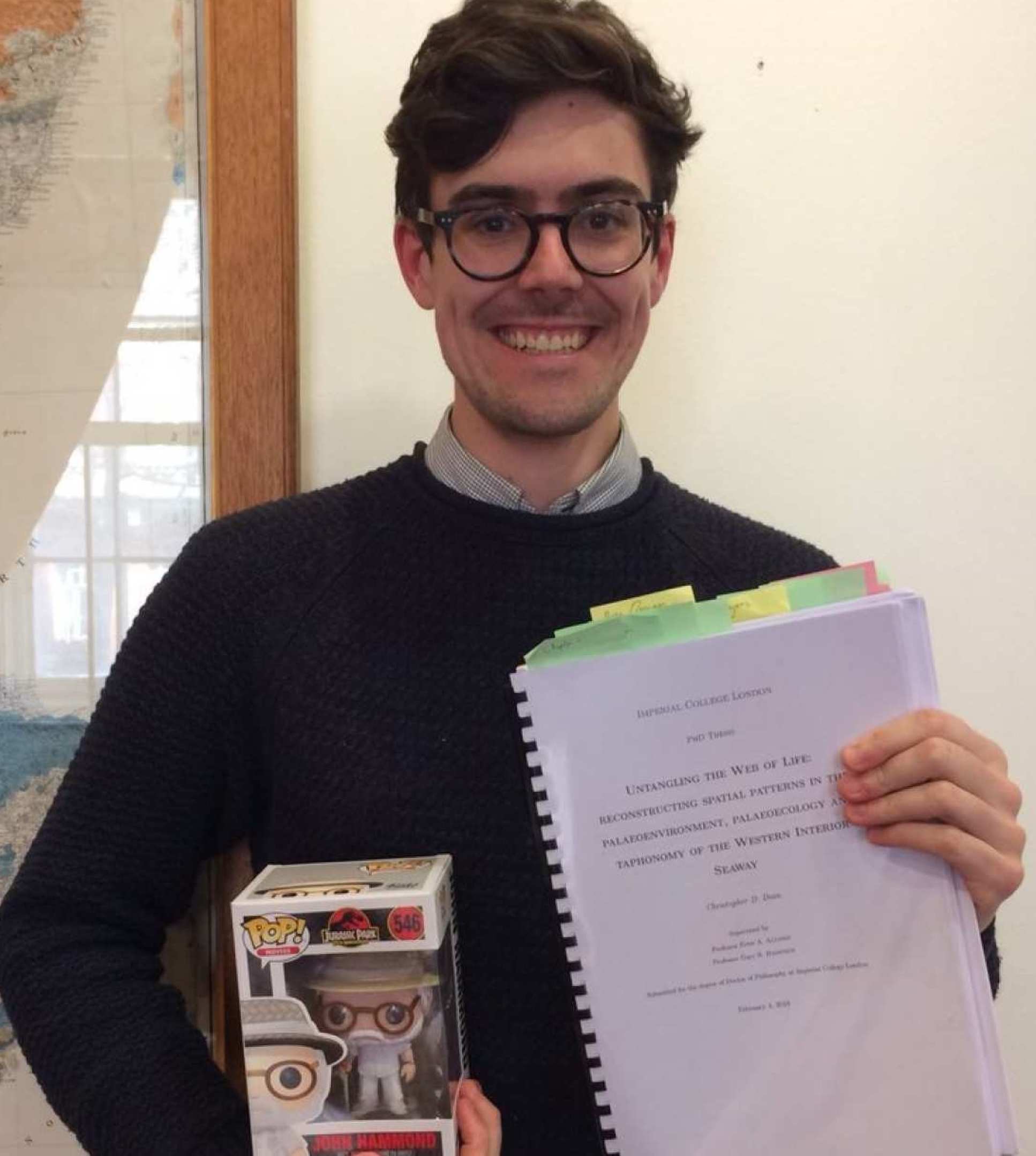
Chris Halls Obituary
It is with sadness that we note that Chris Halls passed away on 30 March 2018.
Chris was for many years a leading staff member in the Royal School of Mines who studied and taught ore deposit geology. Chris was passionate about the subject and will be remembered as someone who put his students above anything else. We are grateful to Chris for his work in the Royal School of Mines and generations of mining geology graduates will be thankful to have benefited from his great enthusiasm and knowledge.
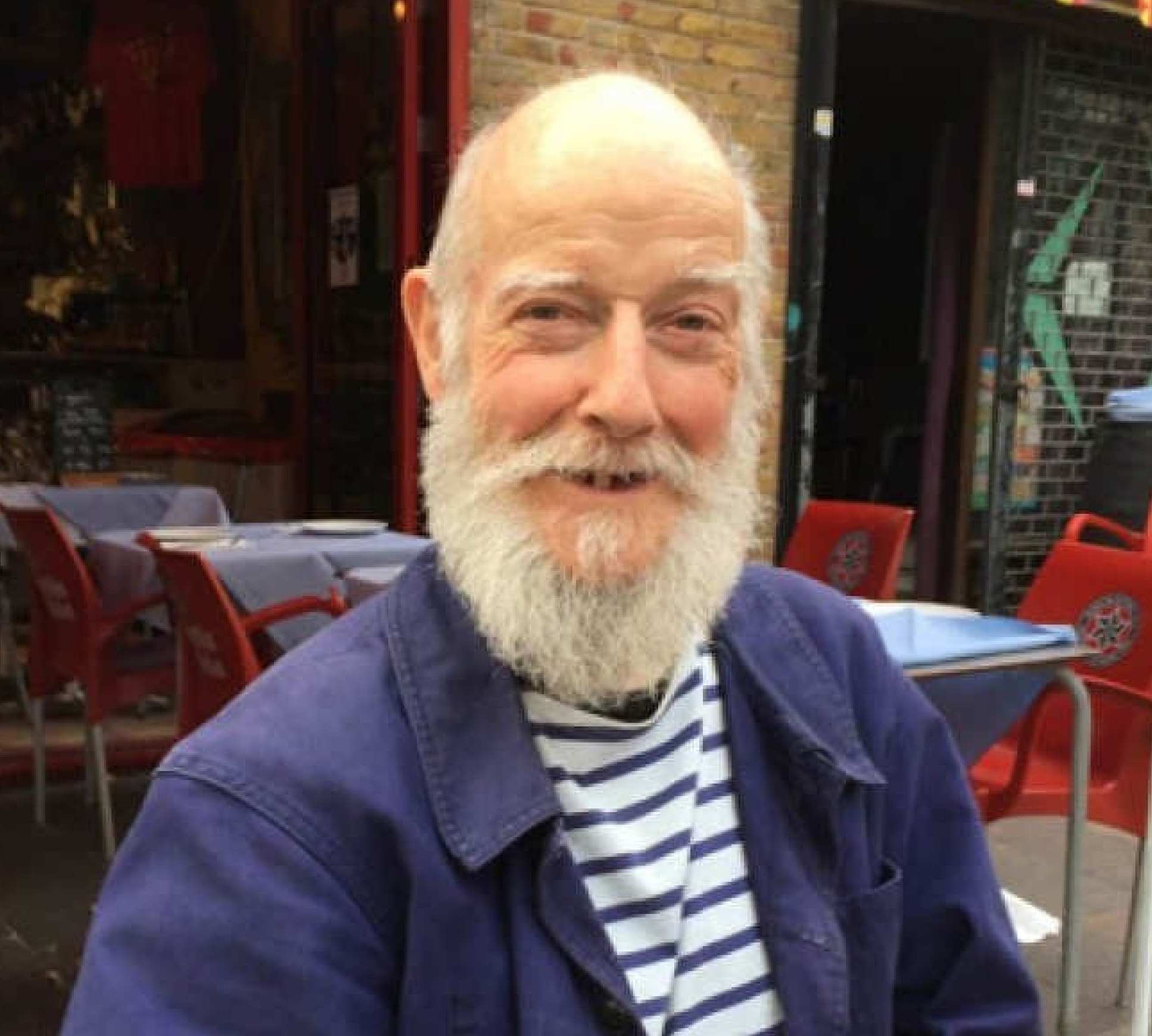
Article text (excluding photos or graphics) © Imperial College London.
Photos and graphics subject to third party copyright used with permission or © Imperial College London.
Reporter
Ruth Davey
Department of Civil and Environmental Engineering

Contact details
Email: press.office@imperial.ac.uk
Show all stories by this author

